Star Wars: Customizable Card Game (SW:CCG) is an out-of-print customizable card game based on the Star Wars fictional universe. It was created by Decipher, Inc., which also produced the Star Trek Customizable Card Game and The Lord of the Rings Trading Card Game. The game was produced from December 1995 until December 2001. Since 2002, the game has been maintained by the Star Wars CCG Players Committee, with new virtual cards being released every few months and the capability to play both in person and online.
Several video games based on the Magic: The Gathering franchise exist for multiple systems. Some have attempted to translate the card game to electronic play nearly exactly; others have taken more liberties and drawn more from the setting than the actual rules of the card game. Benefits of successful video game versions of the card game include convenience, practice, and challenge. However, artificial intelligence for a game such as Magic is an extremely hard problem, and such software usually must be continuously updated to stay current with recently released card sets. Video game versions often expand on artwork, and may include unique cards that rely on randomness, effects which would be difficult or annoying to duplicate in real life.

WarCry is an out-of-print collectible card game set in the world of Warhammer Fantasy and published by Sabertooth Games. The base game cards were released in 2003, with newer expansions introduced in the months since. A video game adaptation, titled Warhammer: Battle for Atluma, was created for the PSP in 2006.

The 'Neopets TCG' is an out-of-print collectible card game and a spin-off of the popular virtual pet website, Neopets. The game was launched in 2003 and produced by Wizards of the Coast, a large trading card company that produces a variety of other trading card games. Neopets is aimed at a slightly younger audience than other Wizards of the Coast offerings such as Magic: The Gathering. As with many other trading card games, the cards serve two purposes, collecting and playing a game.
The Odyssey is a Magic: The Gathering expert-level block. It consists of a trio of expansion sets: Odyssey, Torment and Judgment.
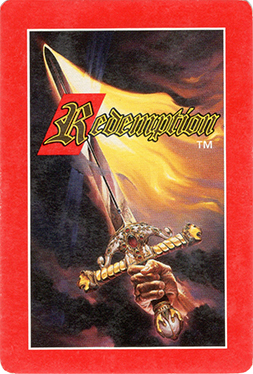
Redemption is a collectible card game based on the Bible. It involves Biblical characters, places, objects, and ideas. The object of the game is for players to use their Heroes to rescue Lost Souls by defeating their opponent's Evil Characters, with the first player to rescue five Lost Souls winning the game. Redemption was first published in July 1995 by Cactus Game Design and its creator, Rob Anderson, continues to develop and produce the game and is the final authority on rulings.
Onslaught is a Magic: The Gathering expert-level block. It consists of the expansion sets Onslaught, Legions and Scourge. The block's main theme is creature types, and much of the game play concerns interactions between these "tribes". The story continues the saga of the Mirari from the previous block of expansion sets. Onslaught was the last block printed before the "modern" card face style was introduced.
Gameplay of the collectible card game Magic: The Gathering is fueled by each player's deck of cards, which constitute the resources that player can call upon to battle their opponents in any given game. With more than 20,000 unique cards in the game, a considerable number of different decks can be constructed. Each card is designed to have certain strengths and therefore a significant part of the game is determined by which cards a player chooses to include in their deck. Broadly speaking, decks can be loosely classified based on their play style and mode of victory. The game's designers often explicitly create cards which are intended to fuel one or more of these given archetypes, in order to create competitive balance and diversity.

The World of Warcraft Trading Card Game is an out-of-print collectible card game based on Blizzard Entertainment's MMORPG, World of Warcraft. The game was announced by Upper Deck Entertainment on August 18, 2005 and released on October 25, 2006. Players can play against each other one-on-one, or can join others in order to defeat dungeon/raid "bosses" based on those in the MMORPG. In March 2010, Upper Deck lost the license from Blizzard Entertainment. The license was acquired by Cryptozoic Entertainment later in the month, with the company announcing that planned card sets would be released.

The Robotech Collectible Card Game (CCG) is an out-of-print collectible card game produced by Hero Factory that is set against the science fiction backdrop of Robotech. Cards are based on characters and mecha from this popular anime. After a limited public beta testing period, the game debuted at Anime Expo in 2006.
Gundam War: Mobile Suit Gundam the Card Game also known simply as Gundam War is an out-of-print collectible card game based on the Gundam anime series produced by Bandai. Players can simulate battles in the anime series. The game is designed for 2 players, though there may be different fan-created multiplayer rules. This game is sometimes confused with the Gundam M.S. War Trading Card Game, since both are published by Bandai and are based on the Gundam series.
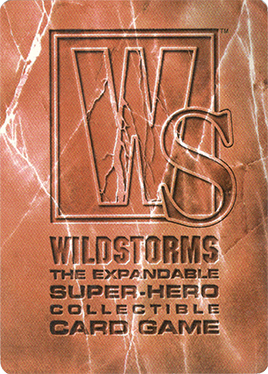
Wildstorms is an out-of-print collectible card game (CCG) published in October 1995. It was developed under the Image Comics Brand and published through Wildstorm under the helm of Jim Lee. It featured all of the Wildstorm characters.
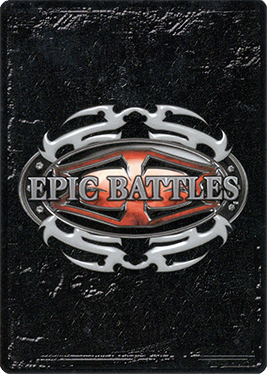
Epic Battles is an out-of-print collectible card game produced by Score Entertainment that was released in September 2005. Gameplay attempts to emulate a traditional fighting game experience and features characters and attacks from several different franchises. There are four separate sets of cards available that feature characters from Mortal Kombat, Street Fighter, and Tekken, plus an unreleased Darkstalkers set.

Chaotic is an out-of-print Danish collectible card game brought to the United States by Chaotic USA and 4Kids Entertainment, and distributed by TC Digital Games. It was released along with the open beta version of the online game on October 24, 2007. The card game is also featured in the animated series of the same name. As of 2014, the website is currently closed and the cards are no longer in production.
The rules of Magic: The Gathering were originally developed by the game's creator, Richard Garfield, and accompanied the first version of the game in 1993. The rules of Magic have been changed frequently over the years by the manufacturer, Wizards of the Coast, mostly in minor ways. However, major rules overhauls have also been done a few times.
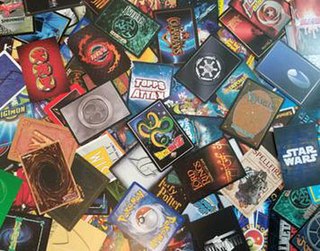
A collectible card game (CCG), also called a trading card game (TCG) among other names, is a type of card game that mixes strategic deck building elements with features of trading cards, introduced with Magic: The Gathering in 1993.
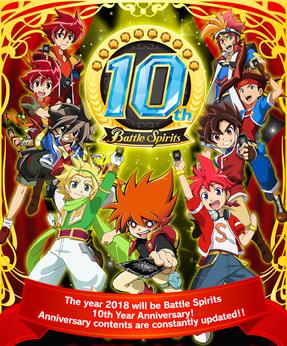
Battle Spirits is a two-player collectible card game (CCG) jointly developed by Bandai and Sunrise, Inc. and a franchise which also includes several anime series, manga serialisations, and other merchandise like toys and video games.

Battle Dex was an online, turn-based strategy game featuring collectible cards inspired by Advance Wars and Magic: The Gathering. An open beta of the game ran from April to November 2010 and the game was publicly released on November 7, 2010.

Hearthstone is a digital collectible card game released by Blizzard Entertainment in 2014, available for Microsoft Windows and macOS PCs and iOS and Android smartphones. The game is free-to-play, with players gaining in-game currency and card packs via winning matches and completing quests, while real-world money can be spent to acquire additional card packs and cosmetic items. The game has been critically well-received and financially successful, estimated in August 2017 to earn nearly US$40 million per month. As of November 2018, Blizzard has reported more than 100 million Hearthstone players. Blizzard has continued to expand the game with the addition of multiple expansions, adventures and game modes.

Teppen is a free-to-play digital collectible card game developed by GungHo Online Entertainment and Capcom. It released in North America and Europe on July 4, 2019 and in Asia on August 8 for Android, and iOS. The game was initially known as Project Battle and is a crossover video game between multiple Capcom franchises.













